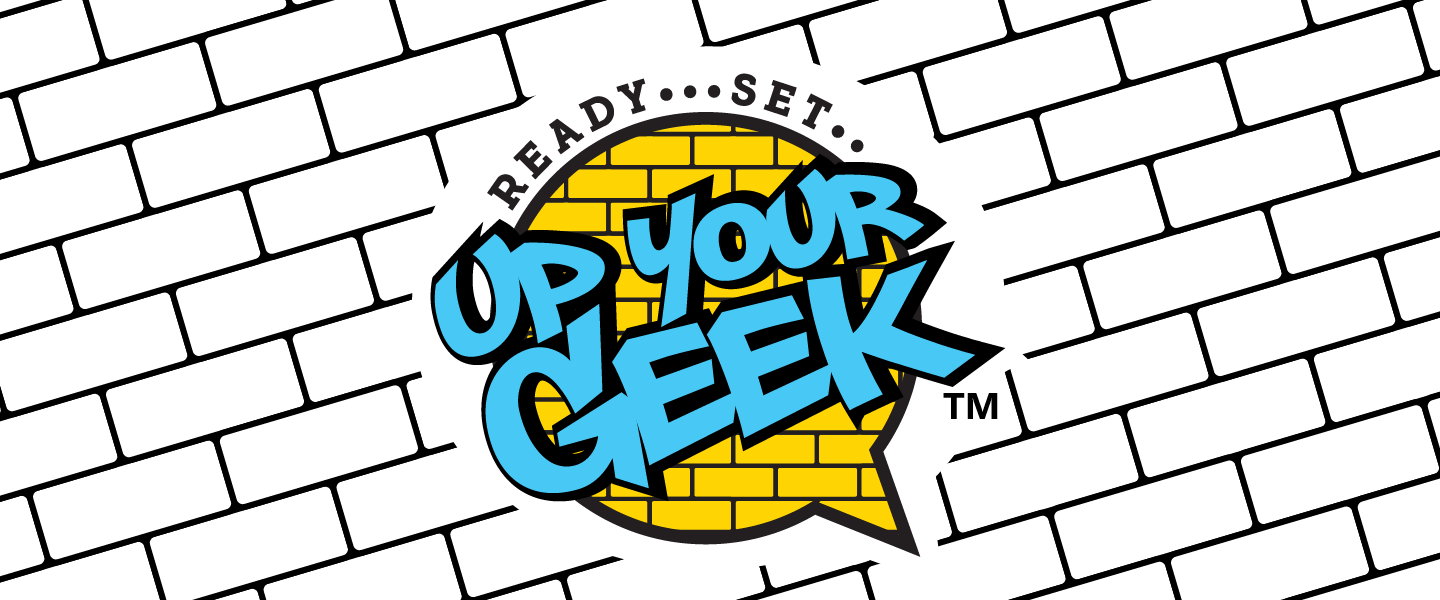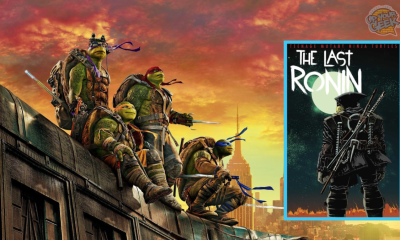Movie Reviews
‘TOHO’s Greatest Achievement’ – Godzilla: Minus One Review (Complete Breakdown And Analysis)
A loose remake of the original Gojira from Ishiro Honda; Director, Writer, and VFX Supervisor Takashi Yamazaki delivers the most impactful, and revolutionary film of the franchise since the 1954 classic. Godzilla Minus One is undoubtedly the greatest Godzilla film of all-time, and after nearly 70-Years of this monster’s history, is TOHO’s Greatest Achievement.
The reason why Godzilla Minus One succeeds as a remake of sorts, is it embraces familiar tones, ideologies, and even scenes, yet it feels extremely dynamic in the way that many remakes of any genre fail to do. You get monster destruction, and epic action set pieces to follow, however, the most important thing that makes Godzilla Minus One stand above, not just any Godzilla or TOHO production, but any film that has come out in 2023, is the character development and themes that impact them directly. Not something I, or as far as I am concerned, anybody else expected to this degree; rivaling only the original cast from Gojira, Godzilla Minus One has the embrace of humanity, than anything to do with the monster presented.
The story plays as a fantastic period-piece, whilst also taking place over the course of nearly two-years from 1945 to 1947, and focuses on Kamiki Ryunosuke’s Koichi Shikishima as he severely struggles with survivors guilt due to his multiple failed attempts to succumb to the pressures, and pride of sacrificing himself to save others. The film opens with Shikishima landing on Odo Island (a brilliant callback to Gojira’s origins), an island surveyed by the Japanese government as a place for repair, with him claiming that he could not follow-through in a Kamikaze attack as a result of his plane having a fault. You can see that Shikishima is very nervous, and as the opening scene draws to a close, he is confronted by the lead engineer Sosaku Tachiban, played by Munetaka Aoki, stating that there is nothing functionally wrong with the plane. Suspicions arise over the pilot, before they are confronted by a new threat. For those that saw the film, not only is the attack from Godzilla, but a Godzillasaurus only seen in previous films such as Godzilla V.S. King Ghidorah (1991). Shikishima is presented with a new opportunity to advance to his aircraft, and fire upon the creature, but something happens, as he falls into panic, allowing the monster to completely decimate the entire military force of the island, with the exception of Koichi, and Sosaku.
Upon returning to Tokyo, Koichi is shocked at the devastation following the fire-bombings of that city. Koichi is almost granted a chance of relief when his neighbor, Sumiko Ota (Sakura Ando), appears from the rumble, surprised to see him. The grief, and guilt of this character is felt tremendously in this scene, as Sumiko is not surprised to see him as a sign of relief, but rather disappointment. The ideology of pride-in-death, specifically at a time of war, is felt throughout all of Japan at this time, and instead of being recognized for surviving, he is guilted for it. To the extent of Sumiko blaming his cowardice actions towards the death of her own children, and rather shrugs-off Koichi’s parent’s as added insult. Koichi takes refuge in a shack that was once his home, and tries to reintroduce himself into society. Which is where he comes across a peculiar young woman, Noriko Oishi, played by Minami Hamabe, and is in the possession of baby girl she found orphaned following her parent’s death. Noriko is adamant about keeping the child, and essentially forces her way into living with Koichi, forming a very unorthodox Family.
As time goes on, Koichi becomes more, and more desperate for work, to the point of taking an extremely risky position in helping remove activated mines in the ocean in nothing more than rickety boat. Assigned to a team with Engineer Kenji Noda (Hidetaka Yoshioka), Captain Yoji Akitsu (Kuranosuke Sasake), and young adult Shiro Mizushima (Yuki Yamada), Koichi is skeptical about the role, at first, but finds comfort in the group, and also finds the opportunity to utilize his abilities to accurately destroy the mines with a turret that sits at the back of the boat. Shikishima does create a little uncertainty with the team, when he first reacts abruptly to Shiro’s jokes about wishing the war had gone longer, so that he could enlist, and later admits to the group that he was assigned as a Kamakaze pilot. Before the crew can make much more of the crew, and while surveying a downed army vessel still afloat, Godzilla arrives to finish-off the remains of the ship, while giving chase to the crew. What follows is an extremely tense, and vigorous scene heavily reminiscent of the climax from Jaws. Dropping mines in the hope of hitting the Kaiju, the manage to get one into his mouth, giving Shikishima the chance to explode the weapon with the turret. The mine explodes, and Godzilla is momentarily down, with his mouth very noticeably damaged on the left-side, however, this takes a turn as we clearly see the wound repair itself almost instantaneously, giving audiences one of the most unique regenerative abilities Godzilla has ever demonstrated. The crew is supposedly saved by another vessel taking fire at the monster, but Godzilla makes short work of the destroyer, and we catch a small tease of the King of The Monster’s atomic breath, destroying the ship from below, with similar imagery saw in Godzilla V.S. Kong. The crew is immediately hit to the floor of their ship, and Koichi faints, only to reawake in the Hospital.
The sequences that follow the boat attack are arguably some of the greatest ever put the screen for the genre. Noriko has found herself a new job in Ginta, and prepares to leave from Koichi, and Akiko for the day, however Godzilla has now begun to make landfall, prompting Koichi to panic, and search for Noriko. The way that Takashi Yamazaki utilizes scale, and framing for the Ginza attack is a true sight to behold, and very telling of the skill, and talent the man possess. Every shot has an extreme amount of care put into it, and even despite if some of the CGI may not be a polished as some may prefer during moments of this scene, it is easily drawn away due to innate nature of what the audience, and even the people within the scene are experiencing. What is a very close homage to the 1954 original, Godzilla’s attack on the train that Noriko is on feels intense, and despite her survival from the monster, none of the way the sequence plays-out feels contrived. There are vehicles flying across city streets, reporters being sent to their doom atop a building, and finally, the moment of Godzilla unleashing his atomic breath (referred to as the heat ray in this iteration) in-full is one of the greatest moments in all of TOHO’s history. To say this scene is “cool”, or “awesome” would be the easy buzzwords to use for this moment, but what makes this scene stand-out is the emotion, and emphasis that is placed on the victim’s around Godzilla. The build-up does not just come from seeing Godzilla begin to glow, but also cuts from the human reactions are way add layers to a moment that is over just as quickly as it began. You see some citizens try to run, or hide, but the emotional and eerie impact from this moment comes simply from the reactions of those not running, and those bracing for something they thought was long-over, and that they had survived at the end of WWII. In a last-second effort to teach Koichi that his life has value, Noriko sacrifices herself by pushing him behind a building wall, and taking the force of the blast on her own. The following moment of Shikishima on his knees, screaming in agony alongside Godzilla’s victorious roar, is arguably, the best acting ever seen in this franchise. As an addition to the destruction, black rain begins to pour onto the protagonist, a terrifying detail that puts a final note on the most devastating scene in Godzilla history.
After the attack on Ginza, the second-half of the film, again, harkens to storytelling style of Jaws, where it becomes up to the people to stop this new atomic threat. Koichi, Kenji, Yoji, Shiro, and a group of former armed forces members gather their efforts, and intelligence to come up with a strategy to defeat Godzilla, but it comes with some challenges. Many of the men offered the opportunity decline in fear of being placed in a no-win situation that their Government had just put them through. The thematic elements of fear, and life are brought to a surface with agency as this not only becomes the fear understood by not only Koichi, but everybody in this situation. Kenji Noda does an incredible job of reassuring that this is not a mission they are being put into to just die over, but that this is something that everybody can come home, and maybe, providing some solace of the guilt of failure they had all felt.
The plan that Kenji, now assuming the role of scientific advisor, as well as some of the other engineers, and scientists develop for the third-act is unique to the series. The second you see the water tank, you almost immediately assume this is going to be another attempt at the Oxygen Destroyer. Given the limited resources this team has, they opt for a more practical approach; using freon and ties to create a negative buoyancy for the creature forcing him to the bottom of a trench just outside of Tokyo Bay and exploding them, and if that fails, utilizing inflatable tubes wrapped around Godzilla, as well as jet propulsion to force him to the surface. Such a large amount of pressure would be enough to implode any natural organism, and while there are skeptics about the guarantee of success, their a little to no options left. They manage to garner two military ships to commence the operation, and Yamazaki manage to brilliantly craft an ominous, but at the same time, uplifting sense of comradery.
As preparations for the Kenshi Maru operation are underway, and with an estimation of ten-days until Godzilla’s next arrival, Koichi suggests using one of the decommissioned aircraft that was quite highly advanced in-comparison to the aircraft the Kamakaze were flying at the time. Once they locate the aircraft they require for the mission, they notice that it would require an experienced mechanic to fix some of the stability issues with the plane. Given the guilt that Koichi has gone through since Odo Island, he devises a swift but assured strategy to get the attention of Sosaku Tachiban. Initially, his seek for help at a general inquiry does not work outside of getting an address to his last know location, but by sending letters blaming Tachiban himself for what happened during the opening sequence, Sosaku finds and attacks Koichi out of an understandable anger. Koichi explains that his attempts were to get Sosaku to find him, given the desperate time they have left. Sosaku is extremely dismissive of Koichi’s claims, until he is desperate, and crawling, begging for a second chance at death.
Sosaku takes it upon himself to look over the bitterness of what happened on Odo Island, and because of this, agrees to help Koichi and arrives at the airbase with his own team of mechanics. Koichi insists on taking as many parts away from the aircraft as possible, in order to replace them with as many explosives as possible. The entirety of the Kenshi Maru team is kept away from this sequence, as they are busy preparing, and are unaware of Koichi’s true desire if the two plans fail. As we get a chance to breath, and allow the characters of the Kenshi Maru take in what some assume to be their last chance at, not only redemption, but life, Yamazaki specifically takes moments to slow-down individual shots, as well as show doubt in the character’s expressions.
Despite all calculations, Godzilla begins to make landfall much sooner than expected. The team scrambles, and sets on their way, while Koichi is going through all of the additions to the aircraft by Tachibana. What follows is one of the best third-acts of the year, Yamazaki delivers on fulfilling every piece of narrative development that have been there since the beginning of the film. Koichi successfully manages to get Godzilla distracted with a few 20mm shots, and lures him into the ocean, and towards the trench trap. What builds the tension of this finale, is that each of the sequences of the plan are seen on-screen, but there comes an obstacle with each time. Plan A sees Godzilla plummet, but see that he is still dragging, and Plan B sees Godzilla destroying the inflation devices, thus leading to a scene where Shiro arrives to help the two ships, with an alliance of tugboats from those that want to help drag the monster back to the surface, a moment that harkens a reference to Dunkirk. This incredible sequence is capped-off with one of the most emotionally satisfying conclusions in recent years, where we see Koichi notice the plan fails after Godzilla breaks the surface, and while severely damaged, begins to charge his blast to destroy the Kenshi Maru team. The music cuts, and the entire moment slows on each character, Koichi rushes in to crash his plane, is given a quick beat to think of Noichi, and makes the move to put his googles on, pull a lever, and crash into the mouth of Godzilla. The place smashes right into his mouth, there is another short beat, and the explosives detonate, blowing apart the entire upper half of Godzilla’s head. We see Koichi’s parachute activate, and Godzilla tries to use his atomic breath, only to fall apart as something seen very similarly in 2001’s Godzilla, Mothra, and King Ghidorah: Giant Monsters All-Out Attack (GMK). There is a brief break in the narrative, to show the see when Koichi is getting a demonstration from Sosaku on the aircraft, there was a cut from the scene earlier that distracted from showing what else Sosaku had added. He explains, after seeing a photo of Noichi and Akiko in-front of Koichi in the plane, that he added an ejection mechanism, and finishes with one last word for Koichi “Live”.
Earlier in the film, after Koichi leave Akiko with all the money he has left, we see Sumiko receive a telegram that was meant for Koichi, and following the attack and celebration of the defeat of Godzilla, she rushes the note to him. This gives the audience the closing moments, as Koichi rushes with Akiko in his arms after reading the telegram to the Ginza hospital, where we see Noichi, alive, laying in a hospital bed. Half of her face is covered in bandages, and as Koichi falls to her arms crying, we see what appears to be a scar from the radioactive blast on the lower part of her neck. The final shot shows a piece of Godzilla fall further into the ocean, but you can tell it is beginning to regrow and pulsate, another parallel to GMK. With that, Godzilla: Minus One closes one of the most important films of the Godzilla franchise.
Godzilla: Minus One is without a doubt the best film of 2023. What Takashi Yamazaki has accomplished with this film is nothing short of incredible. For the first time since the original Gojira, I actually wanted to spend more time with the characters, enhancing the fear, and stress you feel when Godzilla is on-screen. Kamiki Ryunosuke, and Minami Hamabe deserve award recognition for their performances as Koichi, and Noichi. Kamiki portrays great emotion, and this is character that keeps getting kicked down time and time, again, whereas Minami demonstrates incredible nuances that compliments her surroundings so brilliantly, as well as having this incredible charm that makes you love her character almost immediately. This film also tackles themes of survivors guilt, redemption, and the will to live in such a powerful way, it honestly rivals any recent war film that has been made. Godzilla: Minus One is heartbreaking, exhilarating, and is not only the best film of 2023, the best film in the Godzilla franchise, but also one of the best films I have ever seen. Being in Calgary, Alberta, it was surprising to see the Friday night showing completely sold-out. Once the film began, you could tell a few people may have been confused as to what Godzilla movie they were seeing, but because of the incredibly powerful narrative, not a single person left. Not since Avengers: Endgame has an entire theatre erupted into applause at the end, sure there have been other films since then, but not to the scale of this audience. From references to Gojira, GMK, Jaws, and Dunkirk to some of the most original, and creative takes on a character that is almost 70-years-old, Godzilla: Minus One is such a refreshing, and important step into the Godzilla legacy. Takashi Yamazaki, you have made every Kaiju fan proud.
Chris Nugent is a pop culture writer for Up Your Geek. He is a BBA Graduate and student of film from Mount Royal University in Canada. He has spent the last three years administrating and writing for different entertainment pages and websites. Chris enjoys travelling to different Cons and Expos around the world and hopes to one day host one of these events. Opinions are my own.































You must be logged in to post a comment Login